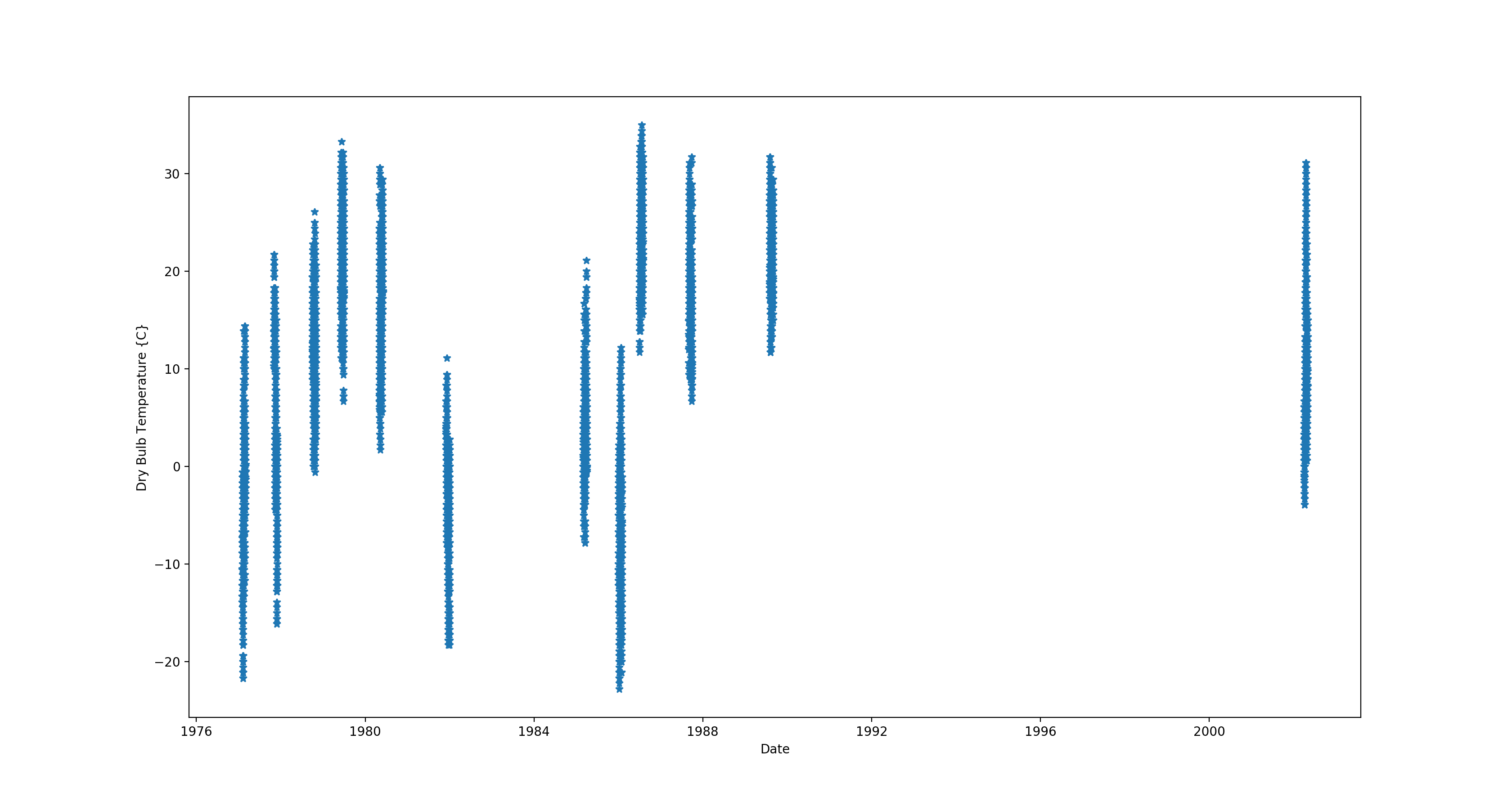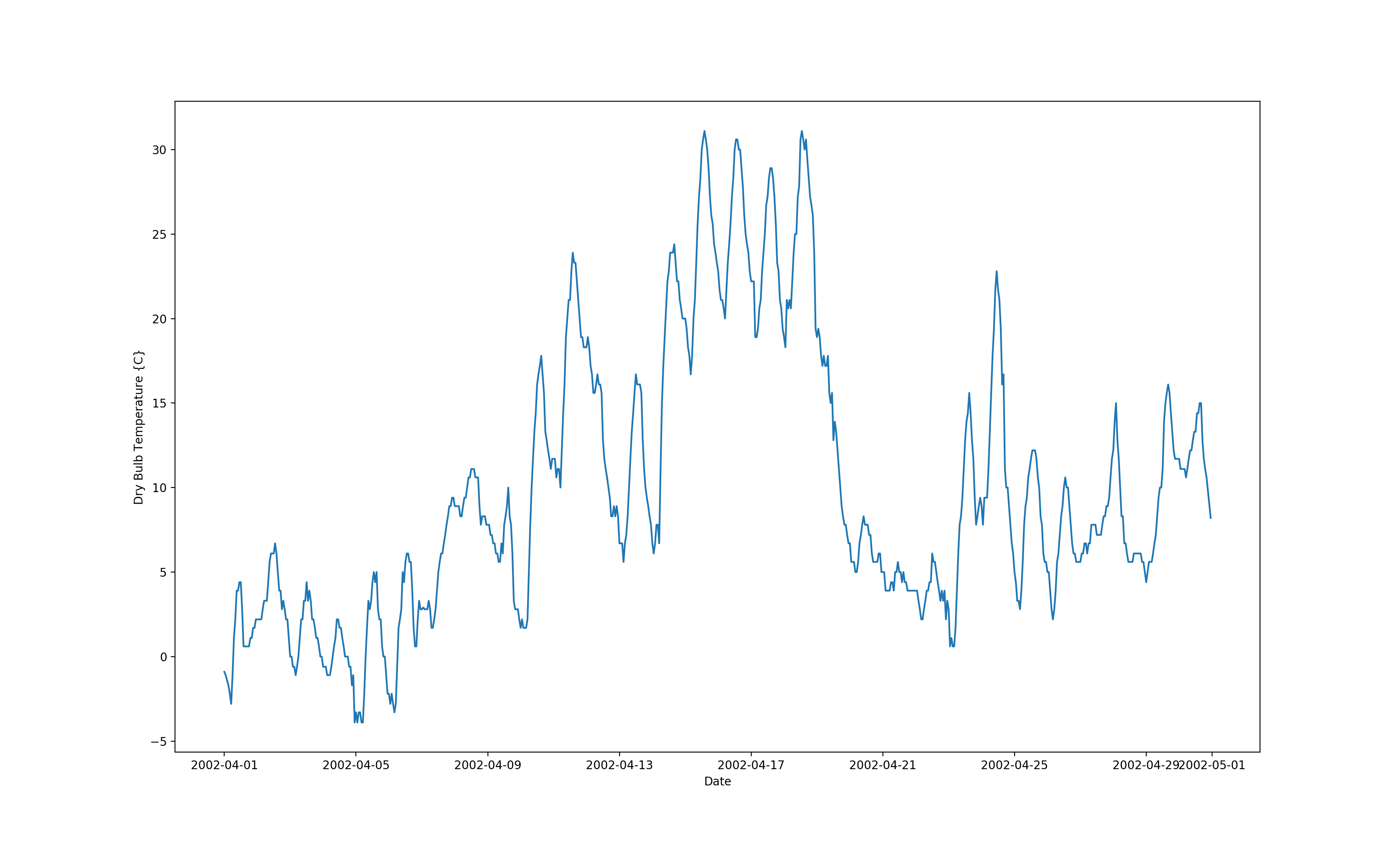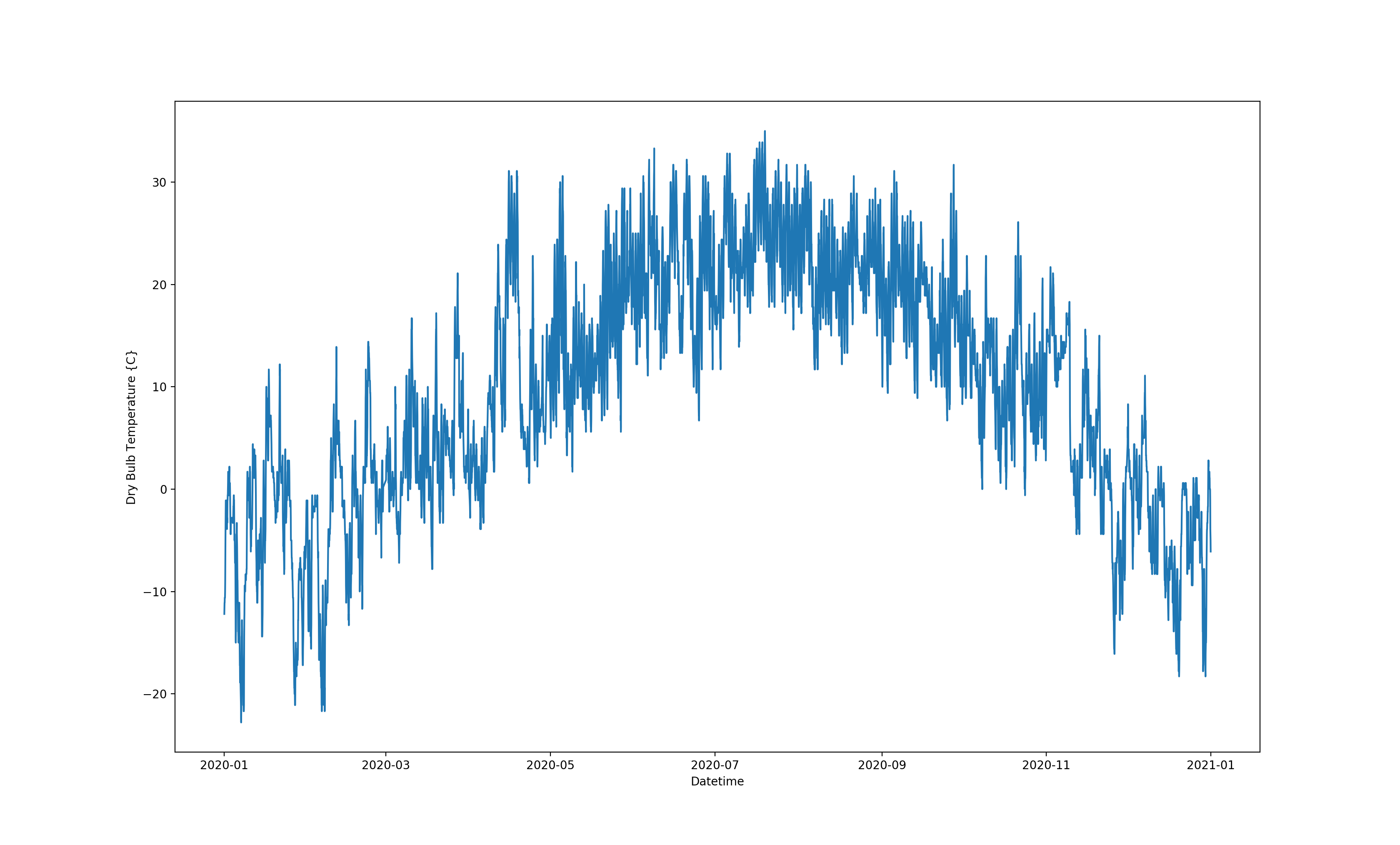EPW data looks incomplete
Hi folks,
When I apply a Whole Building measure on OpenStudio and load an EPW file, I get the following warning about incomplete weather data:

Looking at the actual weather file, I see some pretty sparse data:

..with the last segment being 2002 data over a month:

However, when I run a simulation and output the weather variables via EMS, I do see nonzero weather data. Does E+ do some magic behind the scenes to calculate the missing data?
Thanks.





